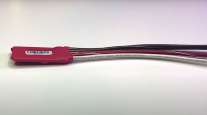Senior Reporter
Most CMV Drivers Killed in 2022 Crashes Weren't Buckled Up

[Stay on top of transportation news: Get TTNews in your inbox.]
Safety experts and regulators have for years been alerting truck drivers about the potential dangers of not wearing seat belts, and the results have been tragic for those who did not heed the warnings.
According to the most current data available, nearly seven of every 10 truck drivers killed in fatal crashes were not wearing seat belts. That staggering statistic, presented during a two-day FMCSA annual research forum on April 24-25, compelled regulators to once again express concerns over the fact that too many truck drivers are failing to buckle up.
In 2022, the most recent year compiled, 916 truck drivers died in crashes. Of that total, 635 who died, or 69.3%, were not wearing their seat belts, according to the National Highway Traffic Safety Administration’s Fatality Analysis Reporting System. That’s the second-highest percentage of drivers killed in crashes not wearing their seat belts since 2017.
“We use this and other data to understand more about why this trend is continuing, why truck drivers are not using their seat belts and countermeasures of how we can reduce this trend,” said Jessica Powell, a statistician in the agency’s crash data analytics division.

Powell
The agency stressed that the benefits of seat belts are well known.
“In a crash, a safety belt keeps the driver in place behind the steering wheel and in control of the vehicle while the vehicle absorbs the impact of the crash and decelerates, which prevents or reduces the consequences of an accident,” FMCSA said in a recent blog post it linked to from its Facebook page. “Safety belts, especially lap-shoulder belts, spread the stress and impact forces of a crash along the stronger and broader areas of the body, such as the hips and shoulders, limiting injuries and minimizing the possibility of truck occupants striking the steering wheel, shift lever, windshield, other objects and other occupants.”
By regulation, drivers are required to wear their seat belts, and a check to see if they’re doing so is part of an inspection by CMV inspectors, said Adrienne Gildea, deputy executive director of the Commercial Vehicle Safety Alliance.
Section 392.16 of FMCSA regulations says, “A CMV which has a seat belt assembly installed at the driver’s seat shall not be driven unless the driver has properly restrained himself/herself with the seat belt assembly.”
Troopers on the highway will pull over truck drivers who they observe not wearing their seat belts, said John Sova, a CVSA roadside inspection specialist.
Sova said some drivers will buckle up at the last minute before they pull off the interstate for a roadside inspection. “Surprisingly, you would think that they all would, but some of them are so used to not wearing their seat belt all the time that they forget even when they come in to the scale,” Sova said.

Gildea
Others simply refuse, Gildea said.
“Honestly, I have no idea why a driver would not wear a seat belt,” Gildea said. “It’s baffling.”
She added, “We have a lot of people entering the industry, a lot of new entrants. Maybe they’re just blinded because they’re new to the industry and they don’t understand.”
Refusing to use your safety belt is like refusing a free insurance policy, according to FMCSA.

The agency and safety groups like the Insurance Institute for Highway Safety say there are seven common myths about not wearing a seat belt. They include:
- Wearing a safety belt is a personal decision that doesn’t affect anyone else.
- Safety belts prevent your escape from a burning or submerged vehicle.
- A large truck will protect you. Safety belts are unnecessary.
- Safety belts are not necessary at lower speeds.
- Good truck drivers don’t need to wear safety belts.
- It takes too much time to fasten your safety belt 20 times a day.
- It is better to be thrown clear in the event of a crash.
Want more news? Listen to today's daily briefing below or go here for more info:




